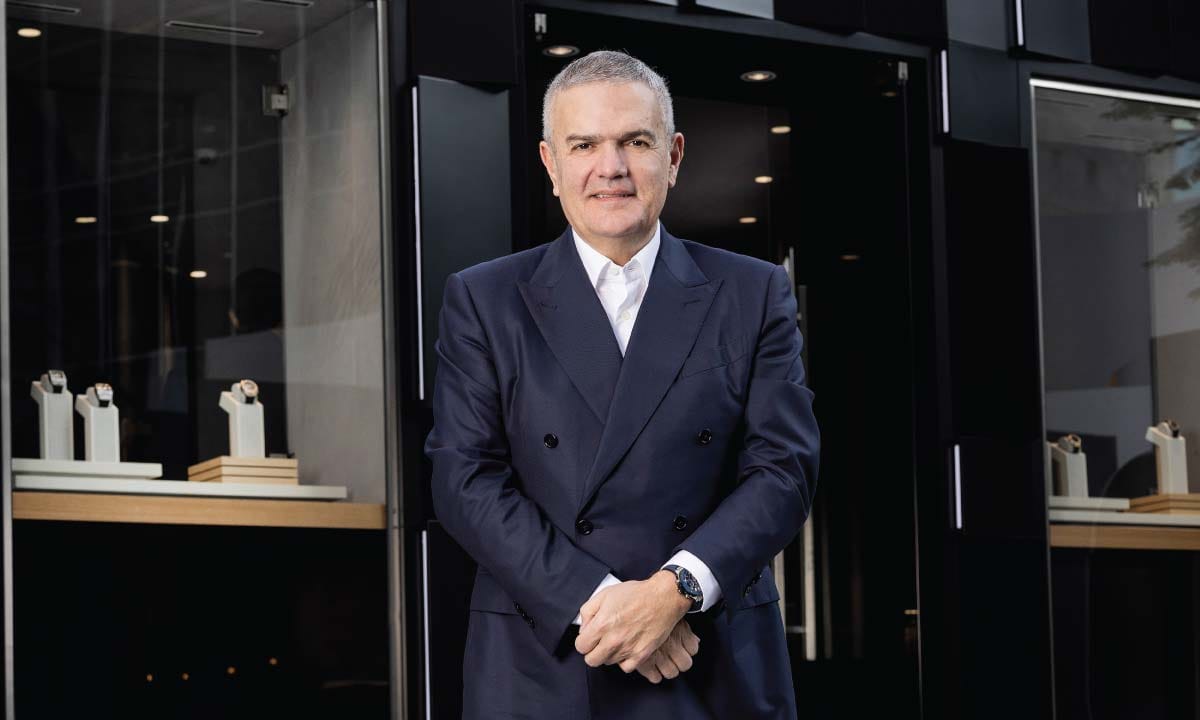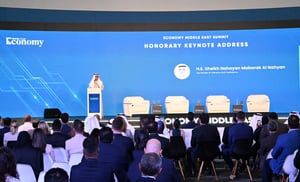Hublot CEO Ricardo Guadalupe shares insights into his illustrious 30-year career in the watch industry, reflecting on his journey from the early days with Bulgari to his pivotal role in shaping Hublot’s unique identity. In this interview with Economy Middle East, Guadalupe delves into the brand’s innovative approach, commitment to fusion, and the challenges and triumphs that have defined Hublot’s evolution.
Economy Middle East: Tell us about yourself and your professional career path.
Ricardo Guadalupe: I have dedicated over 30 years to the watch industry, and as I approach retirement, I reflect on my journey. Born in Neuchâtel, Switzerland, a region synonymous with watchmaking, I recognize the paths one could take, either into banking or the intricate world of watches. Had I been born near Zurich, perhaps banking would have been my calling.
My journey began in 1988 with Bulgari during the early days of their venture into watchmaking. Subsequently, I joined Blancpain, working alongside Mr. Jean Claude Beaver, a significant figure in our industry. Today, I find myself here, having spent the last two decades with Hublot, a brand with a niche presence since its founding in 1980.
Joining in 2004, I’ve witnessed remarkable success driven by our revolutionary concept, “The Art of Fusion.” This idea seamlessly blends the traditions and history of watchmaking with innovation, not merely replicating watches from the past but creating timepieces that bridge the gap between history and the future. Hublot pioneered the use of a rubber strap – a modern material – combined with yellow gold, setting a trend. Subsequent fusions incorporated materials such as ceramic sapphire, colored ceramic, and carbon fiber.
Our commitment to fusion extends beyond materials to movements, with in-house-developed chronographs and complications. The distinctive design, with a strong identity, ensures our watches are recognizable from a distance. The very name “Hublot,” meaning “porthole of a boat” in French, reflects our inspiration, evident in collections like the Big Bang. From screws to gears, the portal concept permeates our designs, creating a unique and recognizable aesthetic.
Economy Middle East: How do you manage to stay relevant year after year?
Ricardo Guadalupe: I consider research and development to be paramount. Establishing our own manufacturing unit in Nyon, near Geneva, where we are currently constructing a new facility, underscores our commitment to advancing technology. In the watch industry, the widespread use of rubber, even by renowned brands like Rolex, exemplifies the need to continually evolve. Many brands have embraced ceramic as well. To maintain our edge of distinctiveness, we recognize the imperative of substantial investments in research and development. This impetus led us to introduce vibrant red ceramic—an achievement that sets us apart in a field where replication is challenging. We’ve also successfully industrialized Sapphire in vivid yellow, a feat that poses significant challenges in its own right.
Economy Middle East: How big a role does your clients’ feedback play when you’re designing new releases?
Ricardo Guadalupe: I think we are successful because we propose watches that are unique and different from competitors. Take the Classic Fusion, for instance – a three-hand watch crafted with titanium, serving as our entry-level model. These are really successful commercially because they are stocked and if you want one you can buy it.

Economy Middle East: How important is DWW for the brand and how do preferences differ from region to region?
Ricardo Guadalupe: Dubai Watch Week is perhaps the most important event for our industry outside Watches and Wonders. Over the years, we’ve seen substantial growth, drawing numerous brands, journalists and discerning customers from Europe and Asia. The Middle Eastern consumers of Hublot exhibit a mature understanding of their preferences, boasting a profound knowledge of watches and luxury products. I’m glad to say we have been successful here because we offer something different.
Also, with regards to Dubai, I would say tourists and visitors are a big portion of our clientele. Dubai Mall is our top-performing boutique. The potential consumer base is expansive. While Saudi Arabia is experiencing growth, it predominantly remains 90 percent of the local market.
Within this region, people really want something particular with a lot of value. Preferences lean toward models crafted with high-quality materials like sapphire, coupled with intricate and complex designs.
Read: Dubai Watch Week 2023: Top brands showcase innovative timepieces
Economy Middle East: What did you showcase at DWW?
Ricardo Guadalupe: We always have new models and special editions in the pipeline. There is a lot of product development happening. At Dubai Watch Week, we showcased two watches – Classic Fusion Black Magic Dubai Watch Week 42mm and Classic Fusion Black Magic Diamonds Dubai Watch Week 38mm – which were designed in collaboration with a calligraphy artist, Wissam Shawkat. It’s linked to our global art partnerships. This one has a local twist for the region with Arabic inspiration. The calligraphy on the dial means “time and duration” which is a nice philosophy. They are, of course, two limited editions exclusively, 50 pieces for men and 50 pieces for women, made of black ceramic.
For more interviews, click here.








